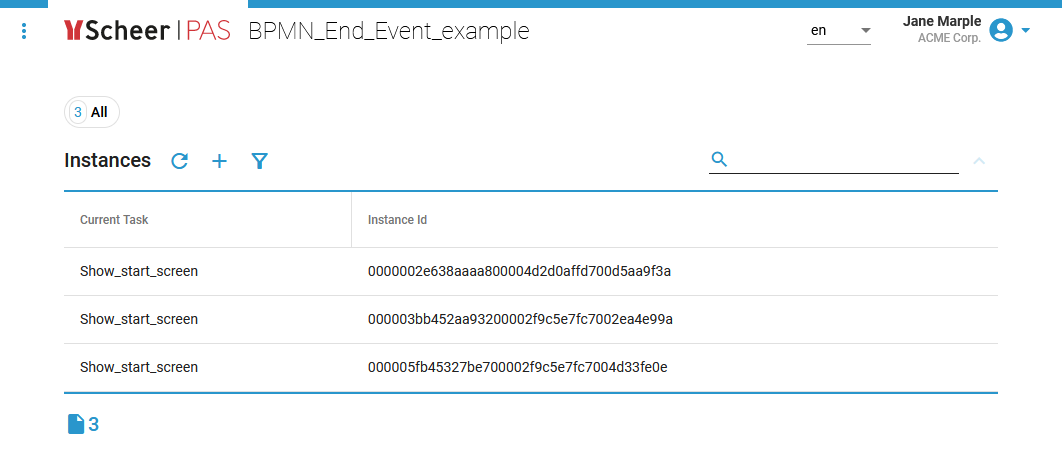Versions Compared
Key
- This line was added.
- This line was removed.
- Formatting was changed.
The Designer provides you with a role-based authorization concept (similar to the role-based authorization concept to run applications) that allows you to define which user is authorized to see the instance list of the respective process.
| Each process has its own instance list. To access the role editor, select the respective BPMN model of your service on the diagram pane and switch to the Attributes panel. Click the icon | ||
| The role editor opens. The dialog initially contains an empty line to enter a role. The handling of the role editor is already described in detail on Modeling Roles. In contrast to these explanations, the radio buttons to assign certain rights to the respective role are not available in the role editor of the instance list.
|
The Role Concept in the Executed Application
Example:
| |||||||
| In this example the following roles have the permission to see the instance list:
| ||||||
| Jane Marple has the role ACME Manager and thus has the necessary rights to see the instance list. | ||||||
| After selecting the | ||||||
| David Stringer has the role ACME Employee and thus has not the necessary rights to see the instance list. |





